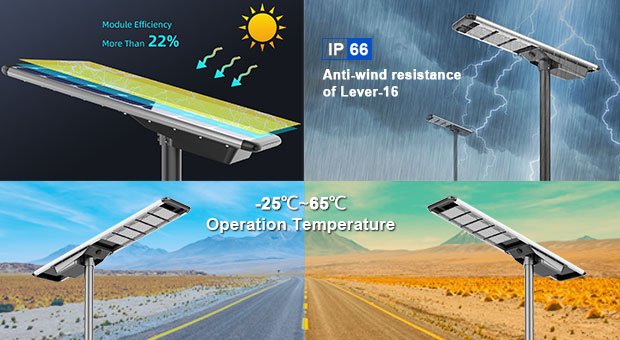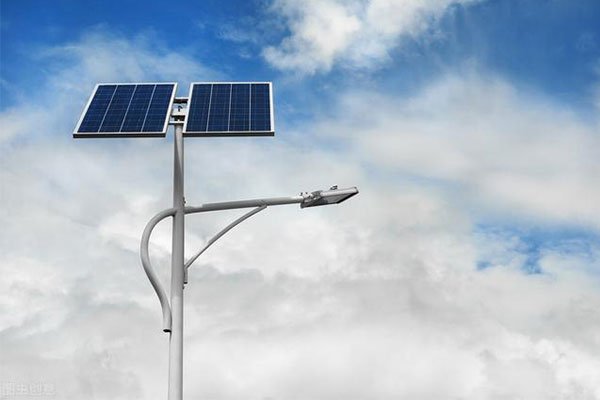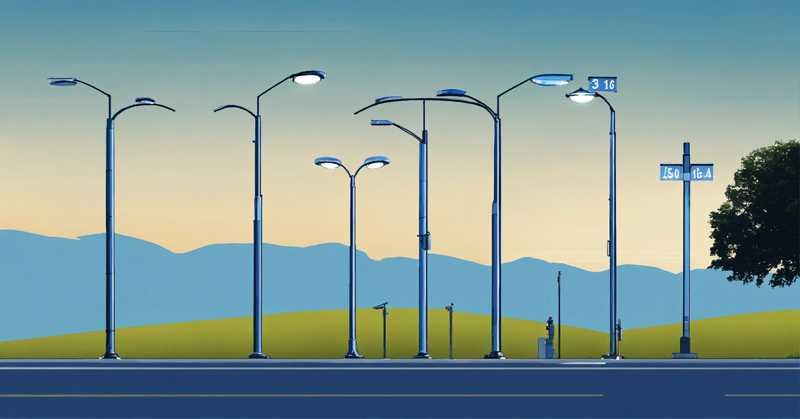Thunderstorms can significantly impact street lighting, causing power outages, structural damage, and increased maintenance costs. To ensure reliability, cities must implement surge protection, backup power systems, and regular maintenance.
Severe weather conditions, including thunderstorms, pose challenges to urban infrastructure, especially street lighting. Power surges, wind damage, and flooding can lead to blackouts and safety risks. Understanding these effects and implementing mitigation measures is crucial for maintaining reliable public lighting.
How Thunderstorms Affect Street Lights?
Lightning Strikes
Lightning strikes are one of the biggest threats to street lighting systems. A direct strike can cause severe damage to electrical components.
Lightning strikes can result in power surges, burnt circuits, and complete street light failures. Installing surge protection devices (SPDs) and grounding systems minimizes damage.
When lightning hits a street light pole, it can travel through the electrical system, damaging transformers, controllers, and LED fixtures. High-voltage surges may also affect nearby infrastructure.
Preventive Measures:
- Surge Protection Devices (SPDs): Absorb excessive voltage and prevent system burnout.
- Grounding Systems: Direct lightning currents safely into the ground.
- Lightning Rods: Divert direct strikes away from street lights.
Power Outages
Thunderstorms can cause grid-wide blackouts, leaving streets dark and unsafe.
Severe storms disrupt power supply, leading to widespread street light blackouts. Installing backup power systems, such as batteries or generators, ensures continuous lighting.
Storm-induced power outages can last for hours or even days. In areas dependent on grid electricity, this creates safety hazards for pedestrians and drivers.
Backup Power Solutions:
| Power Backup Option | Benefits |
|---|---|
| Battery Backup | Provides temporary lighting during outages |
| Solar-Powered Lights | Operates independently from the grid |
| Diesel Generators | Ensures extended backup for critical areas |
Wind Damage
High winds during thunderstorms can bend or break street light poles, damage fixtures, or knock down overhead power lines.
Strong winds can weaken pole foundations, loosen fixtures, and cause light failures. Ensuring sturdy pole installation and secure mounting helps prevent wind damage.

Street light poles made of weak materials or poorly installed bases are at risk during storms. High winds can also misalign LED fixtures, reducing their effectiveness.
Protective Measures:
- Sturdy Pole Foundations: Reinforce bases with concrete or deep anchoring.
- Wind-Resistant Fixtures: Use securely mounted LED fixtures.
- Regular Structural Inspections: Identify weak points before storms hit.
Flooding and Water Damage
Heavy rainfall can lead to water accumulation around street light installations, affecting underground electrical components.
Flooding can cause short circuits and long-term electrical damage. Waterproofing components and maintaining drainage systems reduce these risks.
Excess moisture in electrical enclosures can cause corrosion, insulation failure, and eventual breakdown of lighting systems.
Solutions:
- Waterproof Casing: Use IP-rated enclosures for electrical components.
- Elevated Fixtures: Prevents water from entering light fittings.
- Drainage Maintenance: Regularly clear storm drains to avoid water accumulation.
Reduced Visibility and Safety Risks
Storms reduce visibility, increasing accident risks on roads and pedestrian walkways.
Dim or non-functional street lights during storms make roads hazardous. Regular maintenance and smart lighting systems improve visibility.

During extreme weather, poor lighting exacerbates risks for drivers and pedestrians. Inadequate illumination increases the likelihood of accidents.
Safety Enhancements:
- Automatic Brightness Adjustment: Increases illumination during storms.
- Smart Street Lighting: Remote monitoring for quick failure detection.
- High-Visibility LED Bulbs: Maintain brightness in adverse conditions.
Increased Maintenance Requirements
Storm-related damages increase maintenance costs and require frequent repairs.
Regular inspections and preventive maintenance help minimize post-storm repair costs. A well-maintained system is more resilient to extreme weather.
Storms weaken electrical infrastructure over time. Reactive maintenance is costly, while preventive strategies extend street light longevity.
Maintenance Best Practices:
- Routine Inspections: Identify wear and tear before failures occur.
- Proactive Repairs: Replace weak components before storms arrive.
- Emergency Response Plans: Speed up repairs after severe weather events.
Effective Mitigation Measures
To ensure street lights remain functional and durable during thunderstorms, cities should implement the following solutions:
- Install Surge Protection and Grounding Systems – Prevents lightning-induced damage.
- Use Backup Power Sources – Battery backups or generators keep lights operational.
- Reinforce Street Light Structures – Sturdy foundations and secure fixtures withstand strong winds.
- Waterproof Electrical Components – Protects against flood-related failures.
- Maintain Drainage Systems – Reduces the risk of water accumulation.
- Conduct Regular Inspections and Maintenance – Detects early signs of damage to prevent major failures.
The Importance of Resilient Street Lighting Systems
A well-maintained and storm-resistant street lighting system enhances urban safety and minimizes disruption.

Investing in durable lighting infrastructure reduces long-term costs and ensures continuous operation during extreme weather events.
Smart street lighting with real-time monitoring and automated responses can further improve reliability. Municipalities must prioritize sustainable and resilient lighting solutions.
Conclusion
Thunderstorms pose serious threats to street lighting, causing power outages, structural failures, and increased maintenance needs.
By implementing preventive measures like surge protection, backup power, and regular maintenance, cities can ensure reliable street lighting even in extreme weather. Investing in storm-resistant lighting improves safety and reduces long-term costs.







